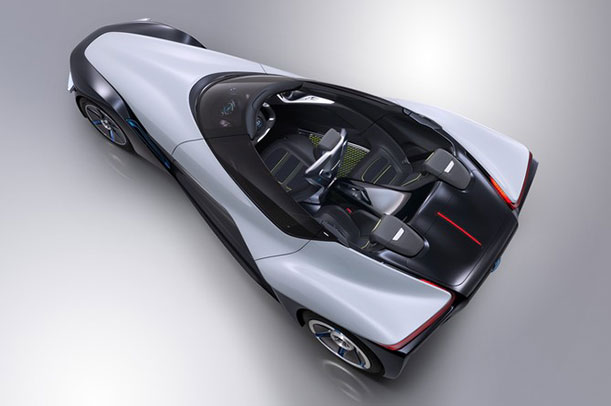The BladeGlider: Nissan’s Concept Car Looks Like a Jet Fighter
The Japanese automaker is working to bring to market a car that actually resembles an aircraft, with its unique aerodynamic styling
/https://tf-cmsv2-smithsonianmag-media.s3.amazonaws.com/filer/20131113015101Nissan-bladeglider-web.jpg)
Nissan believes that the BladeGlider, its latest vision for an electric vehicle, is so especially revolutionary that it wants to make it clear to everyone that the car is “more than just a concept.”
I know. Besides automobiles, sounds like the Japanese automaker is busy engineering some hype as well.
Credit: Nissan
To be introduced at the upcoming Tokyo Auto Show, the BladeGlider is, to Nissan’s credit, unlike any street-legal car that you’ve seen. There’s the innovative use of space-efficient, in-wheel electric motors installed within the hub of the car’s rear wheels. Also, notice the unusual triangular seating arrangement that makes it that rarest of rare car breeds: a three-seater. This odd configuration, however, is fitting since it makes room for an aggressively aerodynamic redesign that looks to be inspired more by military aircraft like the F-14 jet fighter than anything on the road today.
“BladeGlider was conceived around delivering a glider-like exhilaration that echoes its lightweight, downsized hyper-efficient aerodynamic form,” vice president and chief creative officer Shiro Nakamura said in a press release. “This design is more than revolutionary; it’s transformational.”
To be sure, the BladeGlider doesn’t fly (it’s still essentially a car), though it does things that no other four-wheeler in production can. For instance, the drastic shift from the more evenly proportioned dimensions found in standard cars to an alignment where the rear measures about 6 feet across then narrows significantly to just 3.3 feet in the front reduces drag substantially, enabling faster straight line and cornering speed. It also features a unique lightweight carbon fiber underbody that’s not only sturdy but also generates significant downforce to keep the vehicle gripped to the road, eliminating the need for a rear wing. Such attachments are typically installed to help race cars, like sprint cars, hug the track during high-speed driving, but they consequently create drag, which also slows down the car.
In a way, the BladeGlider can be seen as a potentially street-legal version of Nissan’s experimental race car the DeltaWing. Both were drawn up by automotive designer Ben Bowlby and share a similar weight redistribution ratio with the front comprising 30 percent of the car’s weighted mass and the remaining 70 percent carried in the back. With the DeltaWing project, the development team successfully demonstrated that a dramatic overhaul of a car’s architecture would allow something with a much smaller engine to keep pace with some of the world’s fastest race cars when the vehicle finished in 5th place at last year’s American Le Mans Series season finale. Bowlby has since built upon these accomplishments with the development of the Nissan ZEOD RC, a hybrid electric version dubbed “The World’s Fastest Electric Racing Car” that is slated to make its debut at Le Mans next year.
The fact that the BladeGlider is powered by a pair of rear in-wheel motors (Nissan didn’t detail the specs) allows for greater fuel efficiency, because the nascent technology doesn’t rely on complex mechanical processes used by internal combustion engines to deliver energy to the wheels. A series of lithium-ion battery modules located in the rear fuels the motors. Nissan, again, would like to remind everyone that when the BladeGlider indeed “matures into production” it will be the first mass-market use of in-wheel systems.
Some experts, however, think the automaker may have to curb its enthusiasm a bit. “Translating the BladeGlider from concept to customer could be challenging,” writes Paul A. Eisenstein of the industry publication The Detroit Bureau. “Among other things, it will have to adapt to strict new crash standards that could prove challenging with the unusual shape of the vehicle’s nose.”
That said, he adds, ”Nissan seems as committed to using a Delta design on the highway as it is on the track.”
/https://tf-cmsv2-smithsonianmag-media.s3.amazonaws.com/accounts/headshot/tuan-nguyen.jpg)



/https://tf-cmsv2-smithsonianmag-media.s3.amazonaws.com/accounts/headshot/tuan-nguyen.jpg)